 It was asserted once more, in that fatal year 1939, that the responsibility of the Government of India was a local defense only; that meant internal security and the frontiers of India. (38) It signified the Gurkha brigade, to continue the ‘2 to 4’ policy of interwar. James and Sheil-Small claim, at this stage, the majority of the Indian and the Gurkha troops knew next to nothing about the war. (39) A blurred compromise was introduced, supposedly on the fear of a possible invasion of India by the Russians after the Nazi-Soviet Non-Aggression Pact was signed, in 1939. (40)
It was asserted once more, in that fatal year 1939, that the responsibility of the Government of India was a local defense only; that meant internal security and the frontiers of India. (38) It signified the Gurkha brigade, to continue the ‘2 to 4’ policy of interwar. James and Sheil-Small claim, at this stage, the majority of the Indian and the Gurkha troops knew next to nothing about the war. (39) A blurred compromise was introduced, supposedly on the fear of a possible invasion of India by the Russians after the Nazi-Soviet Non-Aggression Pact was signed, in 1939. (40)
As a result, supplementary Gurkhas were sent to the Northwest Frontier now more than ever. However, no significant deliberation had been paid to their capacity and strength for war. This imposed grave problems on the Gurkha brigade, regarding expansion later in the war. As a result, Smith argues that the declaration of war was greeted with relief but not with joy; no one talked about a quick victory or expected. (41)
The primary task of the Indian Army in the phony war was still limited to the mobilization of a few brigades only. Dhan Bahadur Gurung claims, they had no clear information on the progress of the war from the Chain of Command, but rumor had that soon or later we would be going to war, either in the Middle East or Malaya. (42)
 At this stage, the role assigned to the 2nd Battalion in this war is, for the present, to go to Waziristan as part of the 4th Infantry Brigade. (43) In this case, the Gurkhas were not entitled to mobilization, as the GHQ India had to receive permission first for Gurkhas’ deployment overseas.
At this stage, the role assigned to the 2nd Battalion in this war is, for the present, to go to Waziristan as part of the 4th Infantry Brigade. (43) In this case, the Gurkhas were not entitled to mobilization, as the GHQ India had to receive permission first for Gurkhas’ deployment overseas.
(32) Harris J.P, Men, ideas and tanks; British military though and armored forces, 1903-1939, (Manchester University Press, 1995, Manchester), p 237. (33) Marston. D.P, Phoenix from the Ashes, p 15. (34) Trench C, The Indian Army, and the Kings enemies, p 134. (35) Mason. P, A Matter of Honour, (The Trinity Press, 1974, London), p 466. (36) Publication of National Army Museum, an article Ed. by Rice T and Guy A, The Indian Territorial Force 1920, Sept 1939 in Army Museum, (National Army Museum, 1983, London), p 48. (37) Chatfield Report, L/WS/1/155 Indian Office Records, British Library. (38) Mason. P, A Matter of Honour, p 468. (39) James H and Sheil-Small D, The Gurkhas, (Macdonal, 1965, London), p 65. (40) Parker J, The Gurkhas, p 59. (41) Smith. E.D, Brigade of Gurkhas, p 90. (42) Interview with Subedar (Retd.) Dhan Bahadur Gurung, 2/3 Gurkhas. (43) 2/2 Gurkhas, Regimental Records: Documents and historical interests, 1919-1945, (Gurkha Museum Archive)
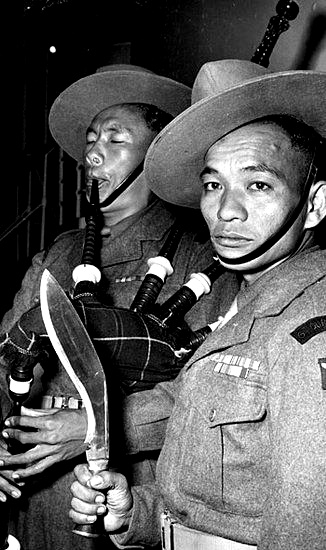 This policy of internal security and defense of empire kept the Gurkhas extremely busy during the inter-war period. Historians claim that senior GHQ officials conserved the traditionalist views toward the modernization of the Indian Army which created significant problems later in the war. Gurkha units provide a unique fighting organization, and as a result, authorities preferred them as an alternative to the British. This practice caused grave problems to Gurkhas’ units, at the expansion stage. Additionally, as Nepal was not a colony of Britain, the decision to mobilize the Gurkhas faced a long bureaucratic process.
This policy of internal security and defense of empire kept the Gurkhas extremely busy during the inter-war period. Historians claim that senior GHQ officials conserved the traditionalist views toward the modernization of the Indian Army which created significant problems later in the war. Gurkha units provide a unique fighting organization, and as a result, authorities preferred them as an alternative to the British. This practice caused grave problems to Gurkhas’ units, at the expansion stage. Additionally, as Nepal was not a colony of Britain, the decision to mobilize the Gurkhas faced a long bureaucratic process.
Transformation of the Gurkha Brigade
The Indian Army’s formal expansion took place following the entry of Italy into the war. (44) In the case of the Gurkhas, this depended on the acquiescence of the Government of Nepal which always kept close control of the recruitment of the Gurkhas. Nevertheless, the fall of France in 1940 and the British losses of 35.000 men in Belgium and 6000 men in France made the role of the Gurkhas more important than ever before. (45)
The escalation of the war finally brought the GHQ India’s intention of mobilizing the Gurkha units for war. In the summer of 1940, the British minister at Kathmandu Col Betham enquired whether the Maharaja of Nepal would permit the Gurkha regiments to go overseas. Undoubtedly, the Maharaja expressed his profound agreement and loyalty just as he had in WW-1. He declared to Col Betham, if you win, we will win with you. If you lose, we will lose with you. (46)
The only condition he imposed on the agreement was that upon their return had to go through a purification ceremony of panipatya (*) in India before coming to Nepal. (47) Most Western scholars accepted the notion that all the Gurkhas are Hindu. However, Chandra Bahadur Gurung, whom himself falls in the martial race category argues that the Gurkhas were forced to panipatya by Rana͋͋.(|) The fact is, however, that the birth to death rituals and customs of those martial races are completely different from those of the Hindu. (48) The contribution of the Gurkhas to the Indian Army during the inter-war period consisted of ten regiments; each had two battalions. From this composition, original battalions from the four regiments were deployed to the Middle East and North Africa, from 1941 onwards. In 1940, Betham again requested that the Indian Army should be allowed a dramatic increase in its Gurkha recruitment to a total strength of 30 battalions to meet the recruitment demands of the ‘target 41’ expansion plan. (49)
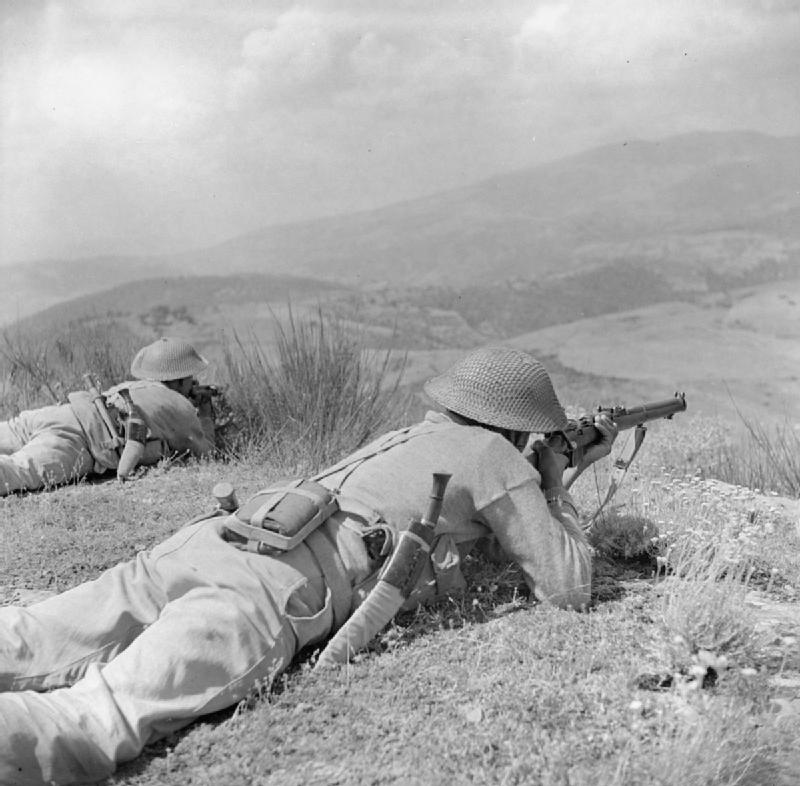 Formal expansion of another ten battalions had also been accepted in 1941, now reaching four battalions per regiment. All requests regarding mobilization and expansion of the Gurkhas had been unconditionally accepted by the Maharaja.
Formal expansion of another ten battalions had also been accepted in 1941, now reaching four battalions per regiment. All requests regarding mobilization and expansion of the Gurkhas had been unconditionally accepted by the Maharaja.
Soon the steady stream of wheaten-skinned warriors with their strange curved knives would become a flood, furnishing some 130.000 men and manning 46 battalions, including two parachutes and two garrison battalions. (50) It was the beginning of a formal expansion to the Gurkha Brigade, and a significant leap forward, taking its modernization to a new level. Unlike the Indian units where they could find potential recruits effortlessly within India, however, in the case of the Gurkha Brigade, it was a long and daunting process, with different policies of recruiting which had to have adhered to because Nepal was not a British colony.
(44) Marston. D.P, Phoenix from the Ashes, p 42. (45) Uprety P.R, Nepal: a small nation in the vortex of International conflict, 1900-1950, (Pugo Mi, 1984, Kathmandu), p 220. (46) Tucker F, Gorkha; The story of the Gurkhas of Nepal, (Constable and Company Ltd, 1957, London), p 213. (*) Each Gurkhas had to go through a water purification ceremony once an individual returned from overseas, by a priest, according to the custom of the Hindu religion. 47 Uprety P.R, Nepal, p 256. (|) ͋Rana is a ruling cast of Nepal and continued to be since Rana’s ancestor Janga Bahadur Rana took power in Nepal’s politics and military in 1846 by power, known as Kot Massacre in Nepalese history. He entitled himself to Maharaja. Since then, the relationship between British India and Nepal, in the matter of the Gurkhas had to go through the Maharaja. (48) Gurung C.B, British Medals, and Gurkhas, (The Gurkha Memorial Trust, 1998, Kathmandu), p 10. (49) Parker J, The Gurkhas, p 121. (50) Bullock C, Britain’s Gurkhas, p 97
Before 1886, there was no centralized arrangement for the recruiting of the Gurkhas, as individual regiments had to find their recruits, in most cases by smuggling through the border, however as for the 1940s, it was not as convoluted a procedure.
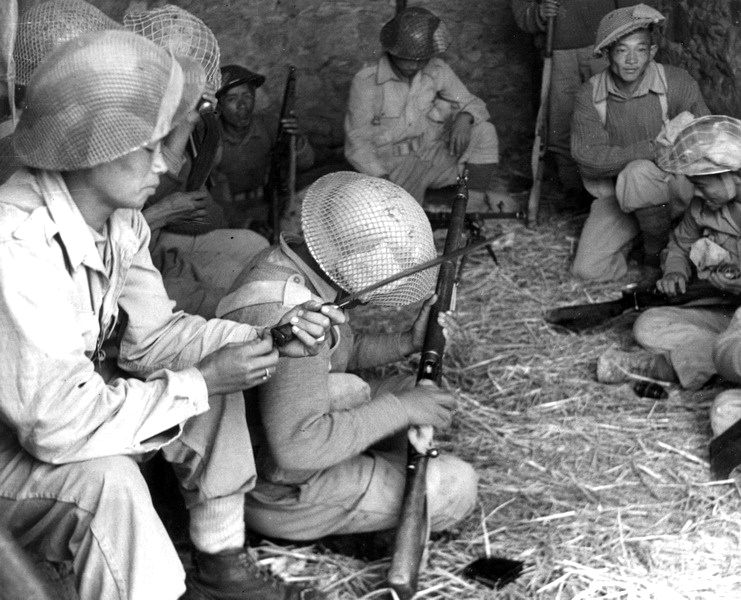 Two recruiting depots had already been established; Darjeeling and Gorakhpur situated on the border with Nepal. Since Nepal has divided up into tribal or ethnic units and a particular set of characteristics would be attributed to a whole people on the strength of often very casual personal observations. (51)
Two recruiting depots had already been established; Darjeeling and Gorakhpur situated on the border with Nepal. Since Nepal has divided up into tribal or ethnic units and a particular set of characteristics would be attributed to a whole people on the strength of often very casual personal observations. (51)
It ensured meticulous administrative attention had to be paid, to the caste system of potential recruits to confirm their identity. Termed as Martial Race by the British Raj, soldiers fighting qualities were critically evaluated by their caste, and recruitment was tremendously affected by this system. As regards the Gurkha regiments, Cross argues, this phrase is used as shorthand for those ethnic minorities in Nepal who, as the British Army has seen them, make the best soldiers. (52) The first martial races were the Magar and the Gurung who was recruited from the central part of Nepal. (53)
The Limbu and the Rai castes were from the eastern part of Nepal, and the latter was previously regarded as a non-martial race. Mason argues the second group of caste, was not far behind in superior fighting qualities than the former as they were at first local levies, more like military police, and employed in state police forces. (54) Nevertheless, they were recruited as a martial race into the Gurkha regiments as the Gurkha’s role in the infantry was expanded in the late 19th century.
In this case, the Gurkha regiments were heavily caste influenced, in that individual battalions always had the same caste of recruits arriving at each intake. The 9th Gurkha Rifles incorporated only Thakurs and Chetris; the 1st, 2nd, 3rd, 4th, 5th, 6th, and 8th Gurkhas Rifles, an equal proportion of Magars and Gurungs, while the 7th and 10th Gurkhas Rifles recruited Limbus and Rais from eastern Nepal. (55)
 To cope with the demand for expansion, the first effort in this direction was the appointment of eleven assistant recruiting officers to be distributed as follows: six in the West and five in the East. (56) On top of that, a separate eighty regular recruiters for every battalion were designated by units. By WW-2, ex-Gurkha recruiters, known as Galla Wallas were included in the recruitment program as a way of helping the regimental recruiter.
To cope with the demand for expansion, the first effort in this direction was the appointment of eleven assistant recruiting officers to be distributed as follows: six in the West and five in the East. (56) On top of that, a separate eighty regular recruiters for every battalion were designated by units. By WW-2, ex-Gurkha recruiters, known as Galla Wallas were included in the recruitment program as a way of helping the regimental recruiter.
Units had to make every effort to forecast their requirements of recruits correctly at the beginning of the season, and to change as little as possible. (57) Cross claims, subsequently that the requirement had to be presented to Rana to gain permission in the first instance. (58) As a result, the Gurkha recruiting became one of the lengthiest processes in the Indian Army. In raising the 3rd battalion in 1940, the 5th Gurkhas allocated eight recruiters, to collect 450 recruits for the 1/5th Gurkhas and 250 for the 3/5th Gurkhas. For individual units, it was important that the NCOs sent in charge of the recruiting party should be able to distinguish between the coarse-bred land of good physique but desirable as a recruit. (59) With approximate demands of recruits from the regiment, the recruiter normally sets out on his journey to the surrounding area of his village, mostly during the Dashain period. (60) During this period, all the boys who were not tending the cattle and goats in the hills at home for the festivities. (61) This opportunistic idea provided the chance of finding hard-working potential recruits.
The Gurkhas in British Military Writings in Modern Asian Studies. (52) Cross J.P and Gurung B, Gurkhas at war: Eyewitness accounts from World War II to Iraq, (Green Hill Books, 2007, London), p 20. (53) Gurung C.B, British Medals, p 10. (54) Mason. P, A Matter of Honour, p 383. (55) Morris C.J, Gurkhas; Handbook, p 131. (56) Uprety P.R, Nepal, p 257. (57) Morris C.J, Gurkhas; Handbook for the Indian Army compiled under the orders of the Government of India, Manager of Publications, 1933, Delhi), p 141. (58) Interview with Lt Col (Retd.) J P. Cross. (59) Mason. P, A Matter of Honour, p 356. (60) Major festival of Nepal, equivalent to Christmas. (61) Morris C.J, Gurkhas; Handbook, p 136
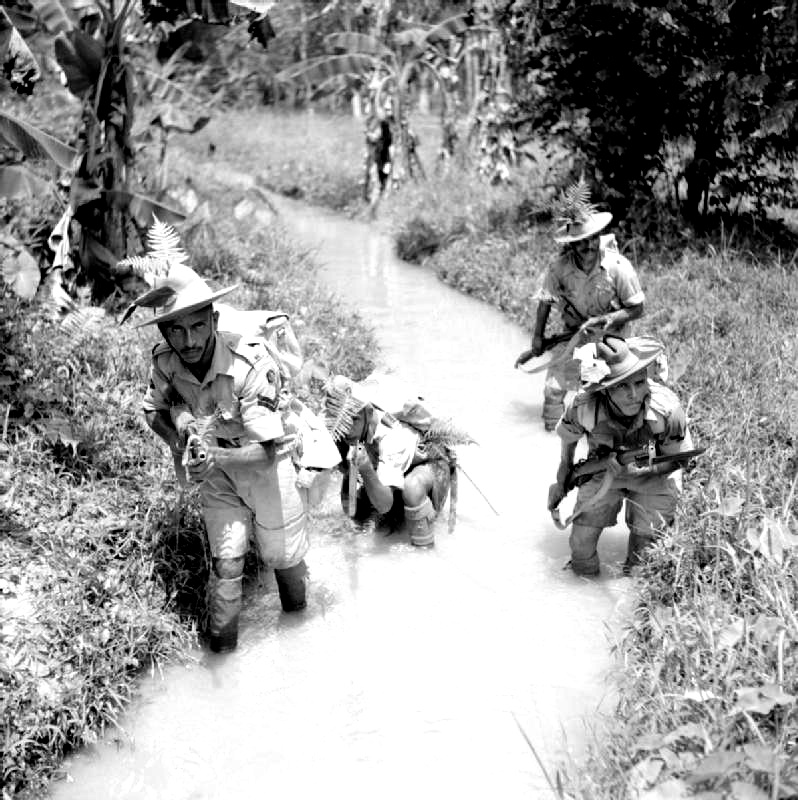 (51) Caplan L, Bravest of the Brave: Representations of In this case, the role of the recruiter in the whole process of transformation was fundamentally vital. It was the Gurkha recruiters, sent from their units who had direct access to potential recruits, but not the recruiting officers stationed in recruiting depots. One must understand that ‘Rana did not authorize British recruiters to enter Nepal then, as for recruiting purposes. (62) Recruiters were those who had sole access to potential recruits. Because of this vital role, the Handbook of the Gurkhas emphasized the quality of the recruiters: It is the appearance of well being, and the tales of life in our service, which attract the potential, recruit just as much as the fact that all soldiers appear to have plenty of money. (63)
(51) Caplan L, Bravest of the Brave: Representations of In this case, the role of the recruiter in the whole process of transformation was fundamentally vital. It was the Gurkha recruiters, sent from their units who had direct access to potential recruits, but not the recruiting officers stationed in recruiting depots. One must understand that ‘Rana did not authorize British recruiters to enter Nepal then, as for recruiting purposes. (62) Recruiters were those who had sole access to potential recruits. Because of this vital role, the Handbook of the Gurkhas emphasized the quality of the recruiters: It is the appearance of well being, and the tales of life in our service, which attract the potential, recruit just as much as the fact that all soldiers appear to have plenty of money. (63)
Balkrishna was easily persuaded by the flattering charm of a recruiter, and the story of his adventure. He volunteered and also consulted with his parents about his choice. In most cases, boys from villages do not get permission from their parents. Thus they take every opportunity to escape at night. Jemadar Krishna Gurung ran away with a recruiter from his village while working in a barn. (64) It was the boy who fantasized about the adventure promised by a recruiter, and his ‘Laure’ style was considered in society, higher than his social status. (65)
According to Jemadar Krishna Gurung, , there were not any other significant reasons, but just a personal interest to be ‘Laure’ for him. (66) Cross claims; all enjoyed seeing new places, relished the chance to win a bravery award – a bahaduri. (67) However, these boys, neither understood the value of money profoundly nor were the salary provided to the Gurkhas satisfactory then, compared to their British counterparts. Far worse the case may be if the Gurkhas had family living in married quarters of the battalion. Balkrishna, who lived in the quarter from 1939 to 1942 claims, that he received only 16 rupees of salary per month. Individual had economic constrain like him, who had to spend 12 rupees on rent, and the remaining money hardly could afford food. (68) The possibility of earning more money was restricted to other Gurkhas, but not to parachute battalions. Dalbahadur Khatri asserts, we have given an extra 50 rupees (a month) and that, with our 16 rupees pay, made us rich. (69)
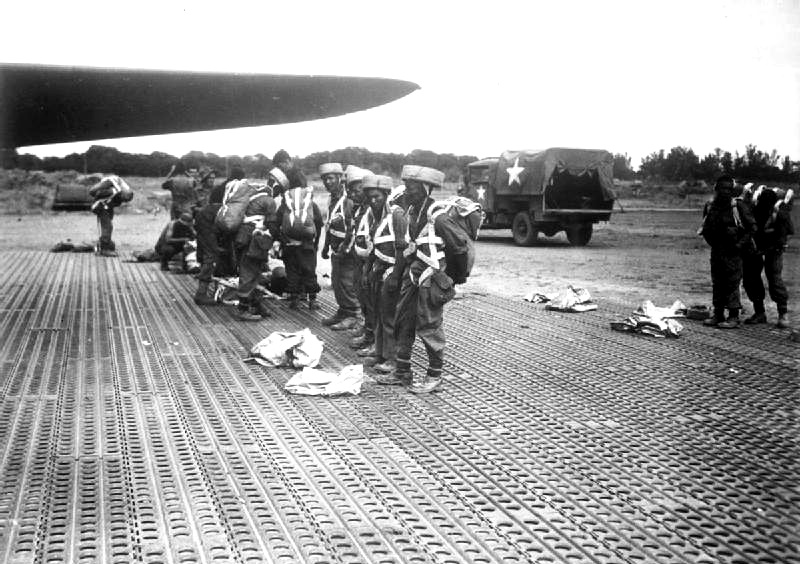 Thus unlike British soldiers, it was not a colonial lifestyle that these boys dreamed of. It was the promise and charm of recruiters that significantly played an important role, in showing overwhelming interest for volunteers. Although, the potential recruits were initially checked by medical officers and recruiting officers, at a recruiting depot upon their arrival; the recruiter had to identify the underlying physical downfall of the young men to prevent further failure, not because of his overwhelming effort. Such as; flat-footed, deformed fingers especially the trigger finger, and bad teeth.
Thus unlike British soldiers, it was not a colonial lifestyle that these boys dreamed of. It was the promise and charm of recruiters that significantly played an important role, in showing overwhelming interest for volunteers. Although, the potential recruits were initially checked by medical officers and recruiting officers, at a recruiting depot upon their arrival; the recruiter had to identify the underlying physical downfall of the young men to prevent further failure, not because of his overwhelming effort. Such as; flat-footed, deformed fingers especially the trigger finger, and bad teeth.
The reason lies that; recruiters were paid a bounty on each successful recruit, but not for the failed one. Individual recruiters had enormous strains, as parents were reluctant in permitting their sons to join the army, and in other cases, recruiting officers at depots looked for high standards of potential recruits. He sometimes had to return without any. In this case, Morris argues, it will be seen, therefore, that it is to a recruiter’s advantage to work for quality rather than quality. (70)
(62) Interview with J P. Cross. (63) Morris C.J, Gurkhas; Hand book, p 144. (64) Interview with Jemadar Krishna Gurung, 1/3rd Gurkhas. (65) A term, commonly used in Nepal, to refer to the Gurkhas. (66) Interview with Jemadar Krishna Gurung, 1/3rd Gurkhas. (67) Cross and Gurung, Gurkhas at War, p 18. (68) Interview with Balkrishna, 1/6th Gurkhas. (69) Cross and Gurung, Gurkhas at War, p 123. (70) Morris C.J, Gurkhas; Hand book, p 144-145
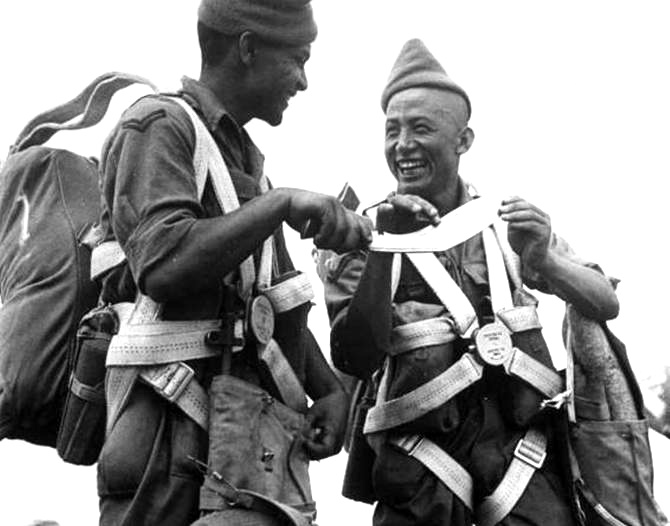 As for the officer, normally, a battalion of Gurkha infantry consisted of 12 King’s Commissioned Officers and 17 Viceroy Commissioned Officers. (71)
As for the officer, normally, a battalion of Gurkha infantry consisted of 12 King’s Commissioned Officers and 17 Viceroy Commissioned Officers. (71)
To command the tidal pool of recruits, the requirement of superior officers was critically high. The rapid expansion itself had restricted individual regiments from being selective, thus forcing them to accept Emergency Commissioned Officers (ECO).
Marston argues, Indian officers had traditionally been restricted to positions in which they could not command British officers (72) however adaptation of ‘Indianisation’ in WW-2, allowed the native Indians to commission into the Indian Army’s commissioned officer in the same grades as British Officers, but this policy did not apply to the Gurkhas. (73) In the case of the Gurkhas, they were part of the Indian Army. Nevertheless, they were not Indians. When the term Native Officers was dropped, their Subedar and Jemadars became Gurkha Officers, not Indian Officers. (74) Despite the implementation of ‘Indianisation’, the system of the Officers Corps in the Gurkha Brigade remained unchanged. Only British Officers were allowed to join, not Indian. Gurkha Officers recently retired were called back while those about to retire were retained. (75)
Rather, the Gurkha units adopted and maintained a disconnected officer system other than the rest of the Indian Army. In the case of recruiting men and Officers, Mason states; the Gurkha regiments became the extreme example of separatism. (76) Most of the regular British Officers’ places were taken by Emergency Commissioned Officers (ECO). These temporary gentlemen arrived rapidly from Britain, with few with some military experience from the OTCs. Schlaefli recalls on TEWIS (Tactical Exercise Without Troops), we had to work out infantry platoon and company maneuvers in the attack. (77)
 Nonetheless, military skills were not the primary challenge initially; it was language to any potential officers joining Gurkhas regiments. Without learning Urdu first, and then Gurkhali, none of the ECOs could join the Gurkha regiments. This proves that the language formed a barrier in one sense, however, if mastered, it provided an opportunity to prove oneself as the most exceptional officer in the Indian Army.
Nonetheless, military skills were not the primary challenge initially; it was language to any potential officers joining Gurkhas regiments. Without learning Urdu first, and then Gurkhali, none of the ECOs could join the Gurkha regiments. This proves that the language formed a barrier in one sense, however, if mastered, it provided an opportunity to prove oneself as the most exceptional officer in the Indian Army.
The ECOs’ received four to six months of tactical training that was drastically shortened from the normal schedule as a result of wartime expansion. (78) The 5th Gurkhas history claims, on joining the Gurkhas; knowledge of (a) regiment and its history and tradition (b) the Gurkhas (c) the language had to be mastered by each Officer. (79) Thus, joining the Gurkhas meant that the British officers must adhere to the way of the Gurkhas. Wounded and sick Gurkha officers and NCOs were utilized in training battalions, to teach the Gurkha customs. This particular problem imposed a tremendous level of restriction on individual regiments, in employing these officers for front-line duty.
(71) Lunt J, Jai Sixth: 6th Queen Elizabeth’s Own Rifles 1817-1994, (Leo Cooper, 1994, London), p 46. (72) Marston D.P, A force transformed: The Indian Army and the Second World War in A military history of India and South Asia; From the East India Company to the Nuclear Era, ed. by Marston D. P and Sundaram C.S, (Indiana University Press, 2008, Bloomington), p 121. (73) Sundaram C.S, Grudging Concession: The Officer Corps and Its Indianization, 1817-1940 in A military history of India and South Asia, p 89. (74) Mason. P, A Matter of Honour, p 309. (75) Bullock C, Britain’s Gurkhas, p 97. (76) Mason. P, A Matter of Honour, p 309. (77) Schlaefli R, Emergency Sahib; of Queens, Sikhs, and the dagger Division, (R J Leach and Co. 1992, London), p 16. (78) Marston. D.P, Phoenix from the Ashes, p 43. (79) The History of the 5th Royal Gurkha Rifles, p 439


















